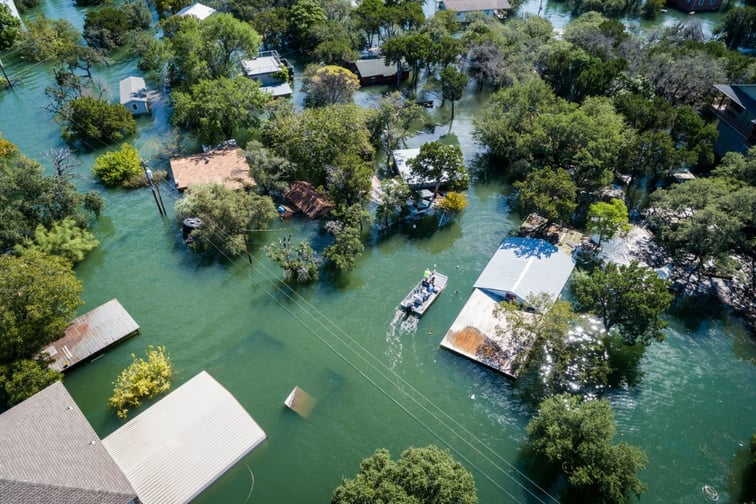

It is no secret that Canada is highly susceptible to severe weather. From winter storms to floods, tornadoes, drought, landslides, and wildfires, Canada sees it all – and these extreme weather events are only becoming more common and severe amid a changing climate.
Catastrophe losses in Canada rose to over $2 billion last year, according to a recent CatIQ report, which put 2021 in the top five loss years of all time. The year saw 14 catastrophic weather events that incurred at least $25 million in insured losses, with British Columbia flooding and wildfires causing some of the most severe events.
“Climate-related catastrophes in Canada are increasing in frequency and severity and impacting our communities like never before,” said The Co-operators EVP and chief operating officer, P&C manufacturing Lisa Guglietti.
“As an industry, we must collaborate across sectors to develop real action and proactive solutions that protect the financial security of Canadians, by focusing on preventing losses, increasing risk awareness, and investing in solutions and infrastructure that will help build long-term community resiliency.”
A new report from the Council of Canadian Academies (CCA) highlighted how proactive disaster preparation, risk mitigation, and climate change adaption practices are crucial to reducing Canada’s exposure to natural catastrophes and strengthening public safety.
“The tragic and damaging impacts of cascading hazards are becoming increasingly apparent, as we saw in BC, where record-breaking rainfall triggered landslides in areas where vegetation had been destroyed by wildfires just months earlier,” said Scott Vaughan, chair of the expert panel that produced the CCA report.
“But outcomes like this are not inevitable. They are the result of choices that put people in harm’s way. There are practical measures that can be implemented to help mitigate the most damaging effects of extreme weather events.”
The CCA is calling for access to better data on extreme weather events to help decision makers understand and reduce risks and build resilience. It says that insurance programs and policies can be adapted using appropriate data intelligence, to dissuade people from building properties in high-risk areas, to climate-proof buildings and infrastructure, and to encourage property owners to engage in risk mitigation.
Insurance companies have lots of data. Data and catastrophe modelling have become increasingly important in property insurance for determining, managing, and mitigating catastrophic weather risk, according to Bill Gatewood, corporate senior vice president and personal insurance practice leader at Burns & Wilcox.
“Modelling has been around for a long time. People have probably heard it mentioned for many years in the insurance business, but as we become more equipped and better equipped to handle big data, models become more and more ‘every day’ tools,” he said.
“They’re not [just focused on] events anymore; you can model individual risks as you’re quoting them up now. Really, the modelling is designed to look at all of the characteristics of a piece of property and predict what the likelihood is for a loss and how big that loss might be.”
With the rise in catastrophe losses over the last several years, and the expected continuation of this trend - the Insurance Institute of Canada forecasts that annual insured losses could increase to $5 billion within the next 10 years – one positive is that trends emerge from the data collected and lessons are learned.
For example, 2021 was a very active catastrophe year in Canada. One trend that was abundantly clear was that response and recovery for disaster events in 2021 was made more challenging by the COVID-19 pandemic, economic inflation, supply chain disruption, and a shortage of materials for home building and construction. These trends, while probably short-term, are likely to impact insurance results in 2022.
“We’ve seen a huge rise [in the cost] of raw materials for rebuilding homes,” said Gatewood. “Some of that is the natural supply and demand that occurs when you have a catastrophe loss, but it’s also been impacted by the supply chain crisis [and labour shortage] that we’ve had worldwide. That means that claims are being settled over a longer period of time, which increases costs.
“And so, we’re having lots of conversations with our carrier partners and our London markets about things like insurance to value. It’s not a new thing […] but there are times where it raises its head and becomes a very significant issue. And right now, insurance to value is something that’s under the microscope by everybody.
“Everything matters right now, and we [insurers] can’t afford to have rate leakage anywhere in the system, so there’s a lot of pressure. As the modelling continues to come out, we’re going to see carriers exit lines of business […] and we’re going to see them decide: ‘These 178 homes no longer fit our underwriting appetite, and we need to get rid of them.’ There’s going to be more desire to write those properties that do have a very positive predictive result from a profit standpoint.”
While insurers are using predictive modelling to shore up their risk portfolios, the CCA is calling for more intelligence sharing between all key stakeholders (government, insurers, businesses, and the public) to build a coordinated strategic approach to disaster resilience in Canada.
Gatewood added that while data-driven decision making can seem “very mechanical,” relationships are “still very important” – especially when it comes to disaster risk management and mitigation in communities across Canada.
“We all need to appreciate and understand and acknowledge that some of these technical data-driven models and the reports that we can now get publicly, they’re going to drive a lot of decisions,” said Gatewood. “It may feel a little different to some retail agents [and brokers], but it’s just the way it is. Every little thing matters right now.”
